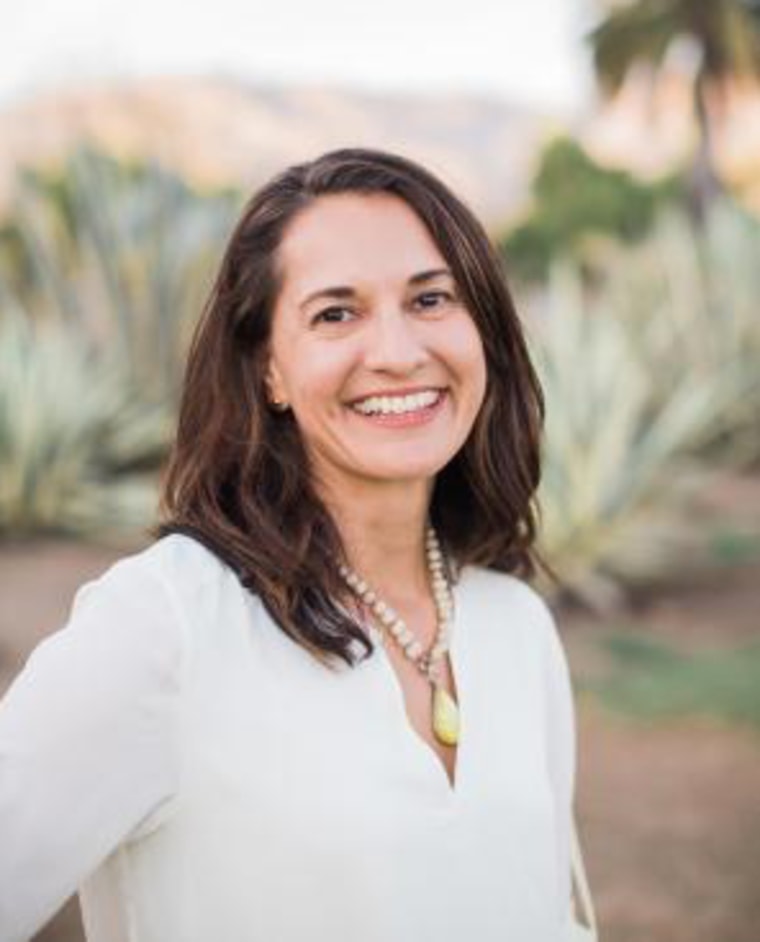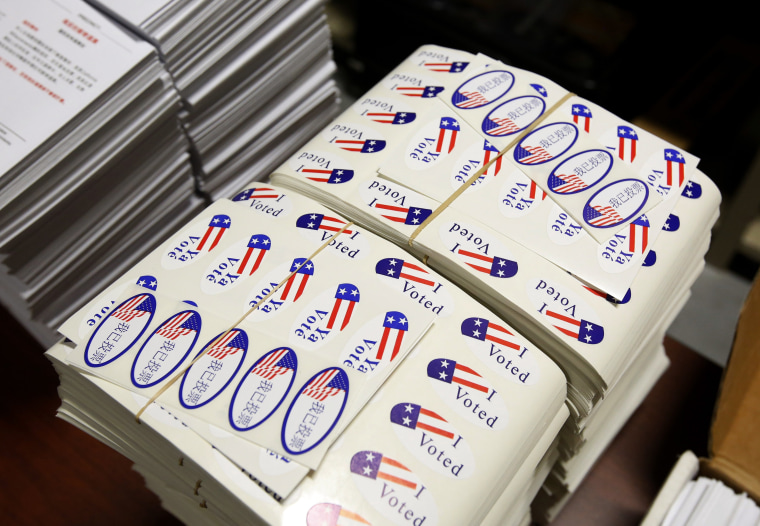In our Latino Political Pulse we ask experts and scholars to weigh in and give us their take on timely political and national topics and issues.
With the California presidential primary upon us, we asked a group of California Latina scholars to give us their thoughts on how Hispanics have changed politics in the Golden State and its lasting impact in 2016 and beyond.
Jody Agius Vallejo

Overwhelmingly immigrant. Persistently poor. Unassimilated. In a state where Latinos are the largest racial/ethnic group, these pervasive stereotypes mask the reality of the Latino population and their political significance.
Contrary to these tired tropes, the majority of California’s Latinos are not immigrants. Nearly two thirds are U.S. born. And while barriers to college and the top economic and occupational tiers remain substantial, Latinos are gradually moving into the middle class.
RELATED: As Dems' Primary Saga Plays Out, California Latino Voter Registration Surges
According to Pew Research Center, 42.3 percent of Latino eligible voters in California make a household income of $75,000 or more. Some are even entering the upper class. I find that in the Los Angeles area, Latinos comprise 7 percent of the top 1 percent of income earners. Many are middle and upper-class pioneers: they are the children of poor or working-class immigrants and some are influencing California’s political present and future by aligning themselves with the interests of the poor and working class.
The rise of the Latino middle and upper-classes, coupled with a historical context of exclusion, has helped to cement California’s political direction. My research on these Latinos demonstrates that their desire to work for change is rooted in the classic immigrant mobility experience, but also key historical political moments that have criminalized their racial/ethnic group via anti-immigrant rhetoric and legislation targeting immigrants—their parents.
RELATED: Author Argues There Are Many Paths to Latino Middle Class
Many of today’s Latino leaders came of age in the anti-immigrant Pete Wilson era, and this time period is engraved into their minds. Political leaders like Ricardo Lara and Kevin de León, were pushed into politics by the anti-immigrant ballot initiative Prop 187. They have both worked diligently to pass progressive legislation concentrating on immigrant rights, access to education and economic mobility—policies that benefit us all.
Other successful Latinos are using their networks and financial resources to create opportunities for integration and political inclusion. They are establishing and are at the helm of institutions centered on college access, healthcare, business, and finance— key sectors of society in which Latinos have historically been underrepresented and denied access—with broader goals of fostering Latino integration and civic engagement.
Latinos are a growing share of California’s electorate and they are injecting themselves into the political process in numerous ways, two trends that will have long-lasting and beneficial effects for a state, and a country, that depends on Hispanics' continued mobility and integration. California also provides lessons for a diversifying country: the criminalization of immigrants resonates at multiple generational levels. In a historical moment where immigrants are being attacked by anti-immigrant political rhetoric, a new generation of Latino leaders is coming of age across the nation.
Jody Agius Vallejo is associate professor of sociology at USC Dornsife College of Letters, Arts and Sciences and incoming associate director of the Center for the Study of Immigrant Integration at USC. Her book Barrios to Burbs: The Making of the Mexican-American Middle Class examines patterns of mobility and socioeconomic incorporation among the Mexican-origin middle class in Southern California.
Dolores Inés Casillas

T-shirts and bumper stickers with “Viva Bernie!” and “Viva La Hillary!” are California’s telltale signs of the state's primary election. Arguably, Latinos are “discovered” every four years by presidential campaigns eager to court a growing Hispanic electorate. Latinos in California, Nevada and elsewhere are used to listening to presidential candidates make pitches in Anglicized Spanish or munching on tacos in front of cameras. Defying the staged photo ops and scripted campaign stops are the memes, #hashtags, and other quick-wit movidas of social media.
RELATED: Latinos Vote, Caucus in 6 States, Clinton and Sanders Vie for Support
That said, for Latinos and Latino issues, the growth of Spanish-language and bilingual media continues to impact California politics, largely by focusing much more attention on political conversations about immigration reform, education, and working-class realities.
Besides the large sums of money spent on political ad placements on Telemundo and Univision, newish online sites such as We are mitú and Remezcla are also dressing political messages with open and culturally-relevant references to immigrant families, undocumented college students, and agricultural laborers.
Indeed, Spanish-language media has long held a beloved advocacy role, beginning in the 1930s with Los Angeles’s Pedro J. González, considered the first major Spanish-language radio host. González used his popular Spanish-language morning radio show to warn Angeleno listeners of unlawful immigration roundups during the Great Depression’s forced repatriations of Mexicans and Mexican Americans.
Last September, Donald Trump’s proposal to deport all 11 million legally undocumented immigrants stunned and disheartened Mexican and Mexican American communities all too familiar with this anti-immigrant sentiment. Weeks earlier, Jorge Ramos’sfamous ejectionfrom a Donald Trump news conference reminded Latino viewers of Spanish-language media’s central role in posing immigration-related questions.
Ramos’s correlations between Trump’s charge to “go back to Univision” with commonplace phrases made to immigrants to “go back home” resonated with a media audience defined largely by Spanish and immigration. Ramos’s refusal to leave harked back to Pedro J. González’s own insistence to use Spanish-language radio to communicate political issues with Latino listeners.
Today however, GOP hopefuls looking for re-election in the increasingly bilingual, bicultural state of California might want to take a cue from San Diego’s GOP Mayor Kevin Faulconer. In a city where a third of its residents identify as Latino, Faluconer’s re-election ads first made their debut in Spanish.
Dolores Inés Casillas is an Associate Professor of Chicano/a Studies at the University of California, Santa Barbara.
Marcela García-Castañon

California and its Latino population are indicative of the future of America. Already a majority minority state, Latinos are the dominant racial minority group, and the demographics of the next generation of voters is already taking shape. Children entering kindergarten in the last 5 years are already more likely to be racial minorities, many of them Latino and the children of immigrant parents. Their parents, many entering the political system for the first time as newly minted citizens, will rely on these kids for translation and information acquisition for much of the children’s adolescence. They'll raise kids who are only a decade or less from becoming voting members of the populace and in California, this means that the electorate is quickly changing.
Within 15 years, the youngest voters will have come of age having helped their parents interpret ballot measures, had long conversations with their families about the (lack of) immigration reform and the biased, hateful language lobbed at them for being born Latino.
RELATED: Making History: Who Are the Latinos Leading the California Legislature?
California's Latino youth voters and their parents have already spent the last decade, or longer, siding with Democrats, discussing and rallying for immigration reform and finding little representation in the political system, but as their increasing presence in the voting electorate solidifies, their value as voters will only increase, for California and the nation.
It is with this emerging electorate, and their role in shaping their parents political engagement, that we will see the newest wave of California voters, many of whom will flex their political muscles as early as June 7th, 2016.
Already, recent polls show that young California Latinos are split between Hillary Clinton and Bernie Sanders in the Democratic primary, more so than their parents who favor Clinton more heavily. While California Latinos are likely to vote Democratic in the fall, the age split will make the California Democratic primary an important race to showcase the next generation of Latino voters and their impact on the political landscape for generations to come.
Marcela García-Castañon is an Assistant Professor in the Department of Political Science at San Francisco State University.

